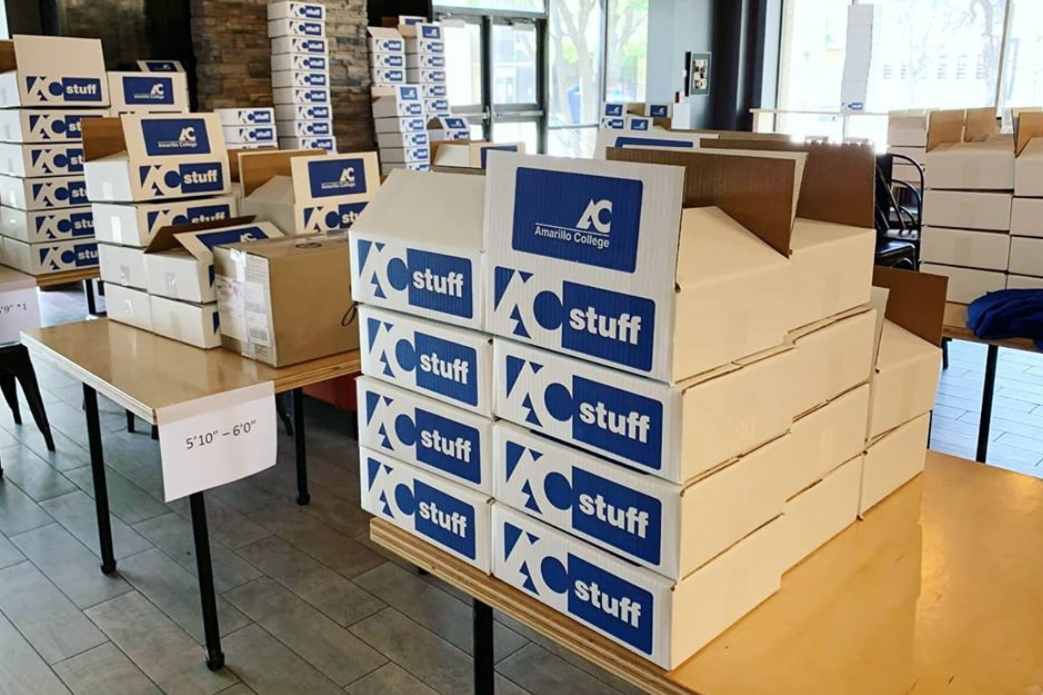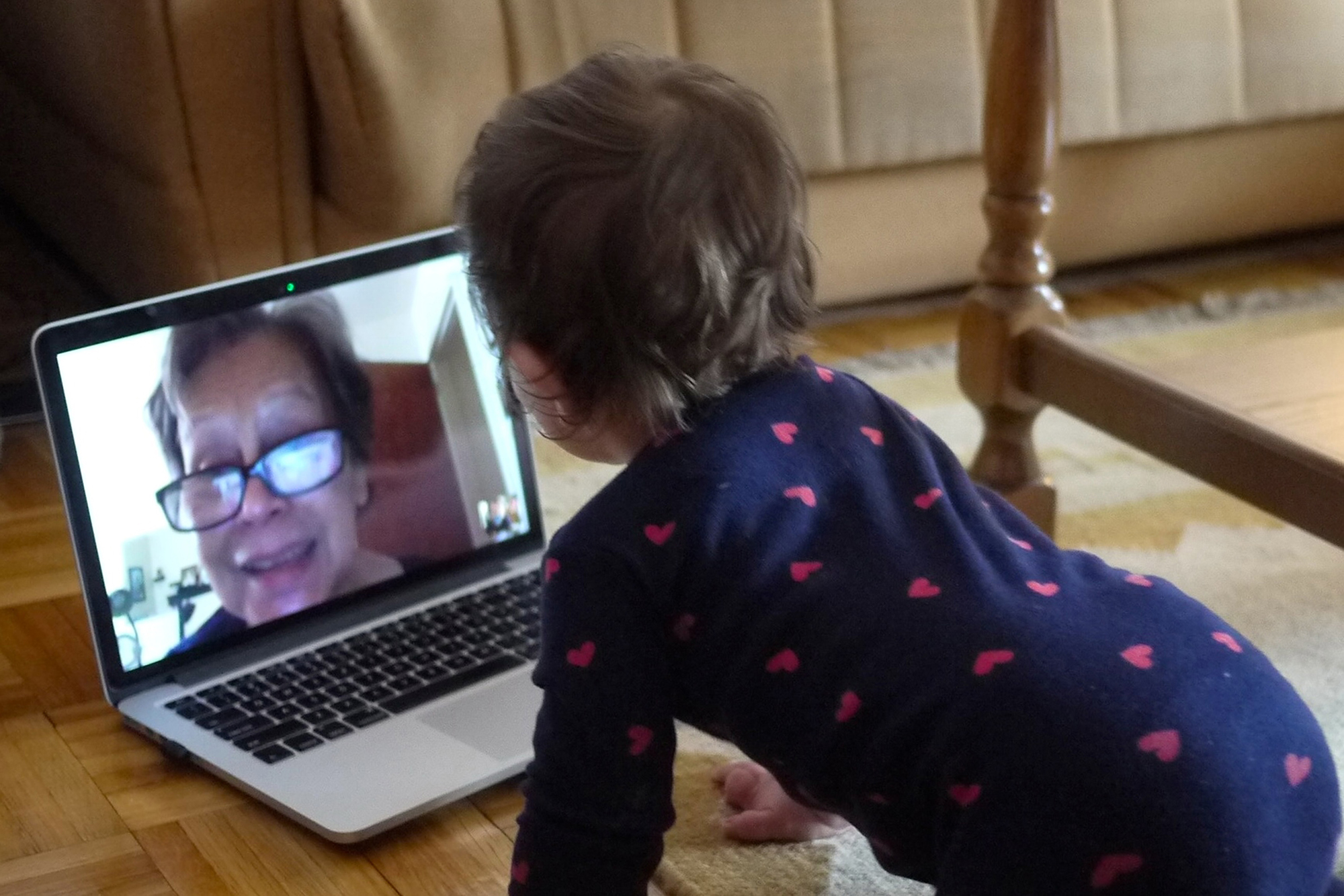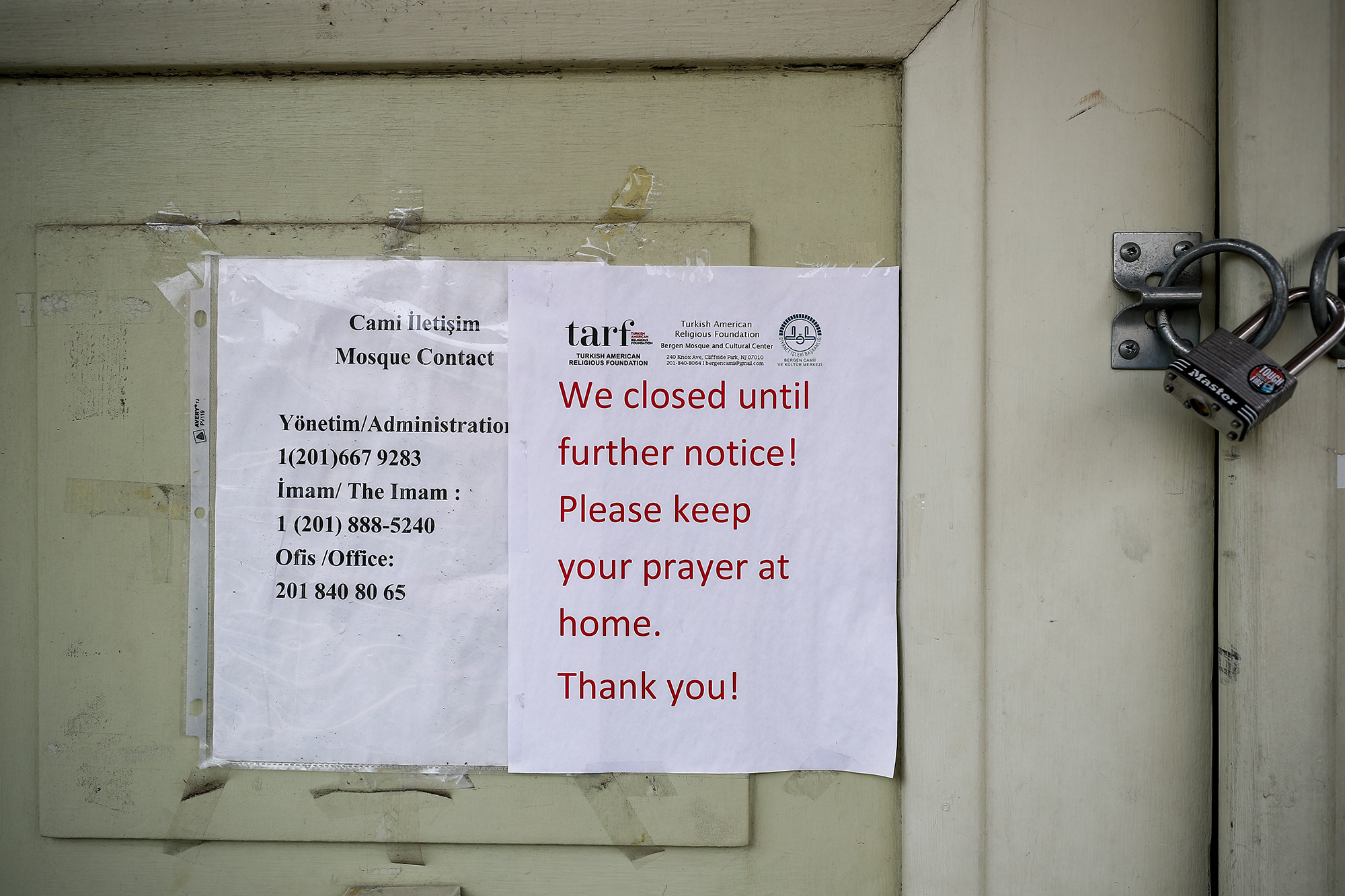Russell Lowery-Hart is the president of the community college in Amarillo, a struggling city on the vast prairie of the Texas Panhandle, halfway between Oklahoma City and Albuquerque. Among Amarillo College’s students are health aides, motel maids, and meatpacking workers — in plants now beset by COVID-19 — looking to education as their road out of poverty.
In the last few years, Lowery-Hart has risen to prominence on the basis of his rousing call to remake higher education to serve today’s typical college student: not an 18-year-old in a dorm but a mother with two part-time jobs and a pile of bills.
When the coronavirus pandemic shut down this college of roughly 10,000 students, Lowery-Hart moved his family photos and a stack of books to a circular welcome desk in the student commons. There, he greets students who don’t have a computer or reliable internet at home. He takes their temperature, asks about possible exposure to the coronavirus, and then, if they pass the screening, allows them to use a computer lab, with social distancing and constant cleaning.
Get TalkPoverty In Your Inbox
I spoke to Lowery-Hart last week to explore what students in poverty are facing during the pandemic, and how colleges are trying to help.
Marcella Bombardieri: The Texas Panhandle has become a hotspot for the coronavirus. How is that affecting the college?
Russell Lowery-Hart: We’ve had a huge explosion of COVID in our community, through the meatpacking plants that now can’t close [according to an order from President Trump]. So there’s all kinds of politics that I don’t want to be involved in, I just care about the people that we’re trying to serve and the neighbors that we live with.
How many Amarillo College students work in the meatpacking plants?
We don’t have firm numbers. What I have are emails from students saying, “I tested positive, and I need help, because I can’t study for my tests and I can’t work.” We’re trying to provide emergency aid and academic support while we’re worrying about their health.
Why did you keep one campus building open for students to use computers and get other types of help in person?
We had to protect our employees and our students, but we knew students that needed a computer [or lacked internet service]. It was really important to me that they had access to a computer, and that COVID not take their future away from them and force them to drop classes.
What are you hearing from the students who come in?
I’ve had a lot of people, they’ve lost their job, and they’re needing to apply for college. A lot of those students [have] heartbreaking stories. They were at Amarillo College, and they got a good job. So they stopped out, and took out loans that they didn’t repay that have gone into collection. And now the job they left all that for is gone. And they know that we’re the solution to their future, but they’re in this trap.
So we’re trying to create payment plans or find resources that can absolve the government money they owe, so they can access money to pay for school and living. It’s just a game of whack-a-mole in so many ways. Solving one need identifies seven other things that they’re needing.
We have students coming in because their internet went down. Or they’re really struggling with their class and they want to drop it, and I’m trying to talk them out of doing that — or talk them into doing that — depending on what’s best for them. All while taking their temperature with our thermal camera and having them bathe in sanitizer.
I talked to one student who had four or five kids at home, all between fourth grade and tenth grade. They’re all on one computer. The student is trying to do her job and her learning on the computer. And her husband’s trying to do his job on the computer. She burst into tears out of guilt that she was trying to escape her house.
Many of your students were poor before the pandemic. Do you have a sense of how much more hunger and housing insecurity your students are experiencing now?
I don’t have numbers on it, Marcella, because we made a decision that we’re not going to check for IDs and track. If you had a need, you got help. We’ve had community members come in and get bags of food. We’ve had a lot of students come in and get bags of food. We’ve gone through a lot of diapers and wipes and formula, and food items, and hygiene items. We’re not limiting the number of bags.
One of our students came in one day, sobbing. Her mother lost her job the week before, she’s got a [teenage relative] living in her house, and they’re all trying to survive now on [one] disability check. I tried to give her two bags of food. And she’s like, “I need to give one of these back. I know there are people that have greater needs than I do.”
It’s one of the things that I worry about with our students. It’s not a pride issue, it’s that they always think someone else needs it more than they do, when we have enough to help everyone.
Have you seen basic needs insecurity among Amarillo College staff, or adjunct instructors, in the past or since this crisis hit?
[Lowery-Hart got choked up as he answered.] I think it existed before, but I don’t know that I had to see it like I see it now. [One of our staff] has taken two bags of food home with her. If we hadn’t lifted the restrictions, I don’t think she would have ever asked for it. It’s one of the reasons why, with our CARES Act funds, we’re creating an emergency aid system not just for our students, but also for our employees.
You have criticized the CARES Act for prioritizing full-time students over part-time students in the formula that determines the funds available to each college. How can we better support community colleges and today’s students?
If you want to make stimulus money have the biggest impact with the lowest level of investment, it’s community colleges. The CARES Act is helpful. I don’t want to complain about the help that we’re going to be able to give students. But that money is also going to support for-profit colleges and universities that have huge endowments.
If you look at what we could give in emergency aid to our students [from CARES], you’re looking at $250 per student. And that’s not going manage a crisis for our students.
You have been through painful state budget cuts before. What’s going to happen when the state budget crashes?
We know the cycle, right? When there’s a crisis, our budgets get cut. And then, 12 to 18 months after the crisis, our enrollment increases as we’re getting funding cuts.
You’ve told me before that it’s not enough to train students for Amarillo’s job market, when many jobs aren’t high-quality. So you want to create better jobs in Amarillo, for example in technology fields like film visual effects. Now the economy is in shambles, so what does that look like?
That’s the question that I’ve lost sleep over. We were preparing for what was going to happen when [driverless trucking means] truckers no longer drive through your community and need your hotels and your restaurants. Well, that was a seven-year-away reality that happened overnight.
We are having conversations about, maybe you can’t graduate from Amarillo College without coding skills or baseline technology skills. That’s going to be a heavy lift for us.
What else do you lose sleep over?
I’m worried about the financial health of my community that was perilous to begin with. There was a huge economic disparity, and now I’m starting to see the Lexuses needing food pantries. The reality of living paycheck to paycheck — even if you had a healthy paycheck — if you’ve lost the paycheck, it doesn’t matter what car you drive. You’re in need.
This interview was condensed and lightly edited for clarity.










